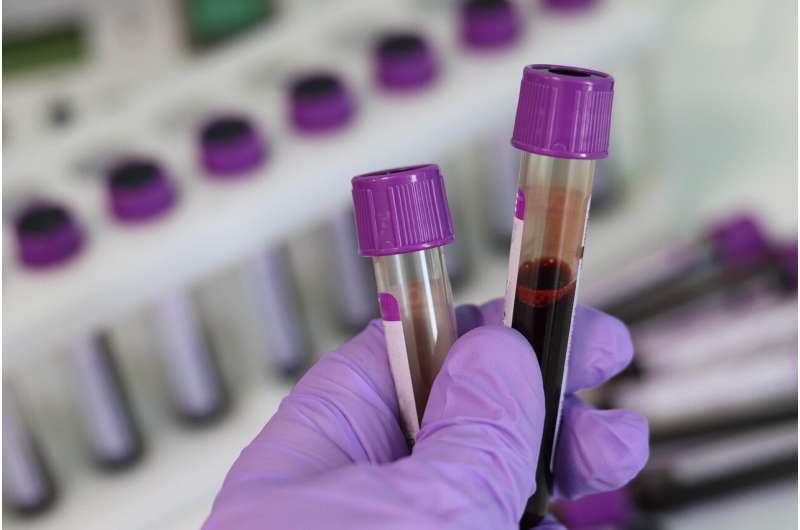This article has been reviewed according to Science X's editorial process and policies. Editors have highlighted the following attributes while ensuring the content's credibility:
fact-checked
peer-reviewed publication
trusted source
proofread
Sepsis signature shifts speed of diagnosis

Sepsis and septic shock patients could experience faster diagnosis and better outcomes thanks to new Western Australian research.
Blood plasma metabolic phenotyping has been successfully used to accurately diagnose the conditions within one hour of blood collection. This is in comparison to current testing methods, pathogen culturing, which can take days to confirm.
Dr. Sam Lodge, from Murdoch University's Australian National Phenome Center, said metabolic signatures were the key to the breakthrough.
"We found that non-sepsis, sepsis, and septic shock Intensive Care Unit (ICU) patients have differential metabolic signatures, which can be used to diagnose patients quickly—within one hour of blood collection," Dr. Lodge said.
"Sepsis is a life-threatening condition when your body has an extreme response to an infection. It needs immediate medical attention, or it can cause death or permanent damage to your body.
"A timely diagnosis has the potential to significantly reduce mortality rates."
The study involved the collection of blood plasma samples from 152 ICU patients in WA hospitals. Using 15 identified parameters, consisting of various metabolites, lipids, lipoproteins, and inflammatory markers, patients were able to be placed into the correct clinical outcome, quickly, with high accuracy.
Patients with sepsis or septic shock exhibited higher concentrations of neopterin and lower levels of HDL cholesterol and phospholipid particles in comparison to non-sepsis patients.
Septic shock patients could be differentiated from sepsis patients based on different concentrations of ten lipids.
The study "Stratification of Sepsis Patients on Admission into the Intensive Care Unit According to Differential Plasma Metabolic Phenotypes," led by Murdoch University, in collaboration with researchers from Fiona Stanley Hospital, St John of God Hospital, Fiona Wood Foundation, University of Western Australia, and Precision Medicine and Metabolism Laboratory, Spain was published in the Journal of Proteome Research.
"As well as impacting individuals and families, sepsis and septic shock pose a significant economic burden to our society," Dr. Lodge said. "While further validation with a larger cohort is required, this study provides a proof of concept for the potential use of metabolic phenotypes in better diagnosing these conditions."
More information: Samantha Lodge et al, Stratification of Sepsis Patients on Admission into the Intensive Care Unit According to Differential Plasma Metabolic Phenotypes, Journal of Proteome Research (2024). DOI: 10.1021/acs.jproteome.3c00803



















